The Last Bend
A better bend for Dyneema
Introduction
I call this knot the Last Bend because it is the last in a search to find a bend that will not slip in Amsteel the way the triple fisherman's knot does. It is easy to tie and very strong, achieving average of 39% of line strength. Amsteel hates knots and this is a very high value. It also loves to slip and this knot resists slipping. On a test of 5 pulls in a calibrated setup with a load cell, two slipped at 35% until they got a 30 second rest and then did not slip. All 5 broke at about 39% of line strength.
Discussion
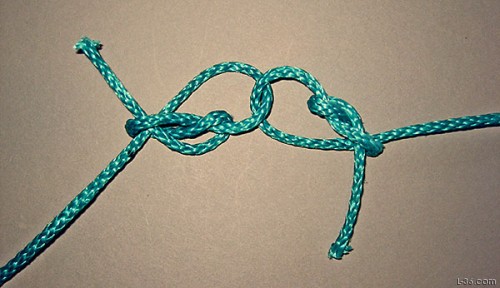 |
Loop two knots together. The knot is similar to a buntline hitch but instead of a clove hitch around the standing end, use a figure of eight made just like the old familiar stopping knot. |
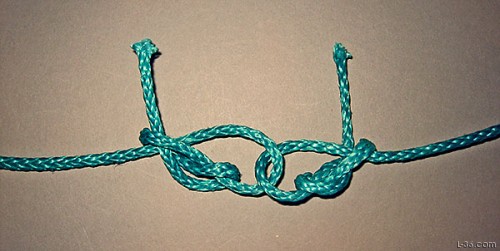 |
Orient the knots so the tails both point in the same direction |
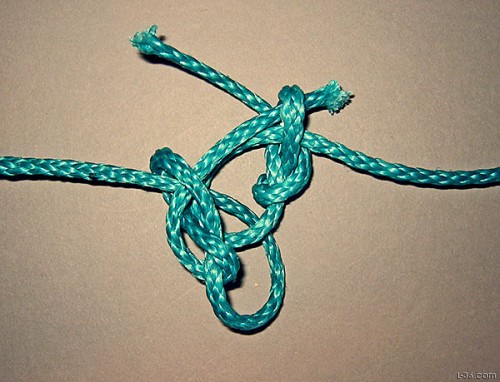 |
Tuck the tail from one knot through the looop that the standing end goes through in the other knot. |
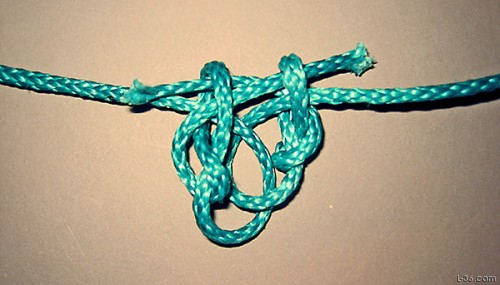 |
Repeat for the other tail |
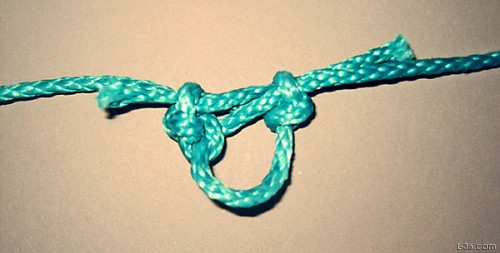 |
Tighten up the figure of eights first. |
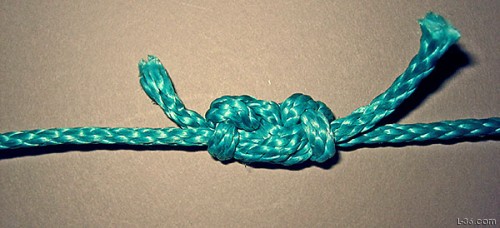 |
Then pull the standing ends and tails to tighten up the knot |
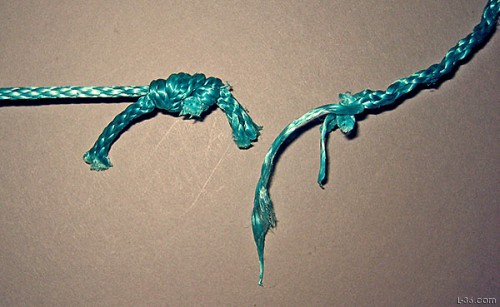 |
The knot broke |
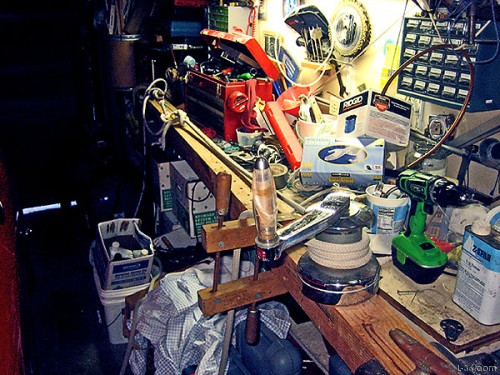 |
Here is my test bench (messy) |
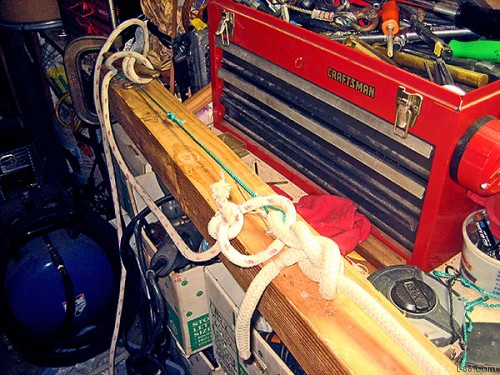 |
The line in the test bench |
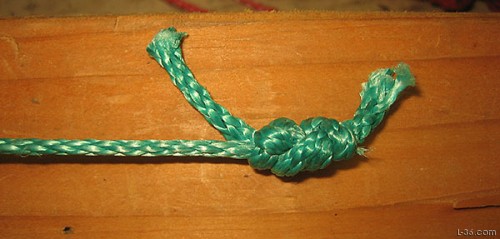 |
The test was a very fast pull, just a few seconds. Here is the bend -- no slip. |
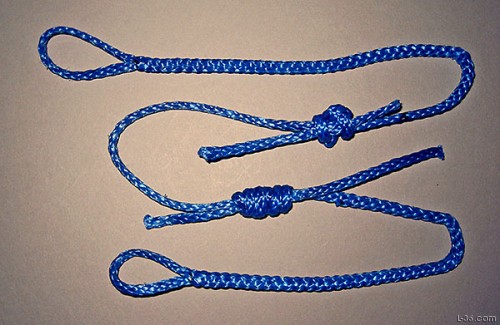 |
This next test is the "bake off" between the last bend and the triple fisherman's knot. The triple fisherman's knot is the standard in the industry for joining this kind of line. |
 |
Here is the test setup. The pull was with a 35 power winch and I pulles as fast as I could turn the winch, which took a few seconds. |
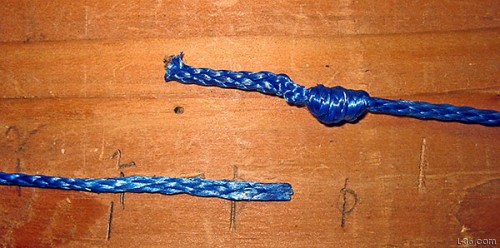 |
The triple fisherman's knot slipped out |
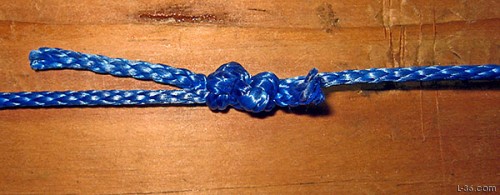 |
And here is the last bend. |
More Testing
This knot was also tested by Sailinganarchy's Estar. He did 5 tests on 3/16 Amsteel. Two of the samples slipped at 1,900 pounds (35%) but held after a 30 second pause. The average breaking strength was 39% of line. This is, in his words, a vast improvement over the triple fisherman's knot which is the industry standard. It slips as low as 25% of line strength. I call this the "Last Bend" because it is the last one I am going to try and figure out. If you wanted to make it stronger, make the internal loops double because that is where it broke. But that makes it more difficult to tie and being better than the state of the art is going to have to be good enough.
Theory of the Knot
Many many bends were tested. With each test, insight on why everything slips was gained. Some of these knots were very complex with many many twists and lots of friction area. They were difficult to tie. But they all slipped
NOTICE: Some pages have affiliate links to Amazon. As an Amazon Associate, I earn from qualifying purchases. Please read website Cookie, Privacy, and Disclamers by clicking HERE. To contact me click HERE. For my YouTube page click HERE